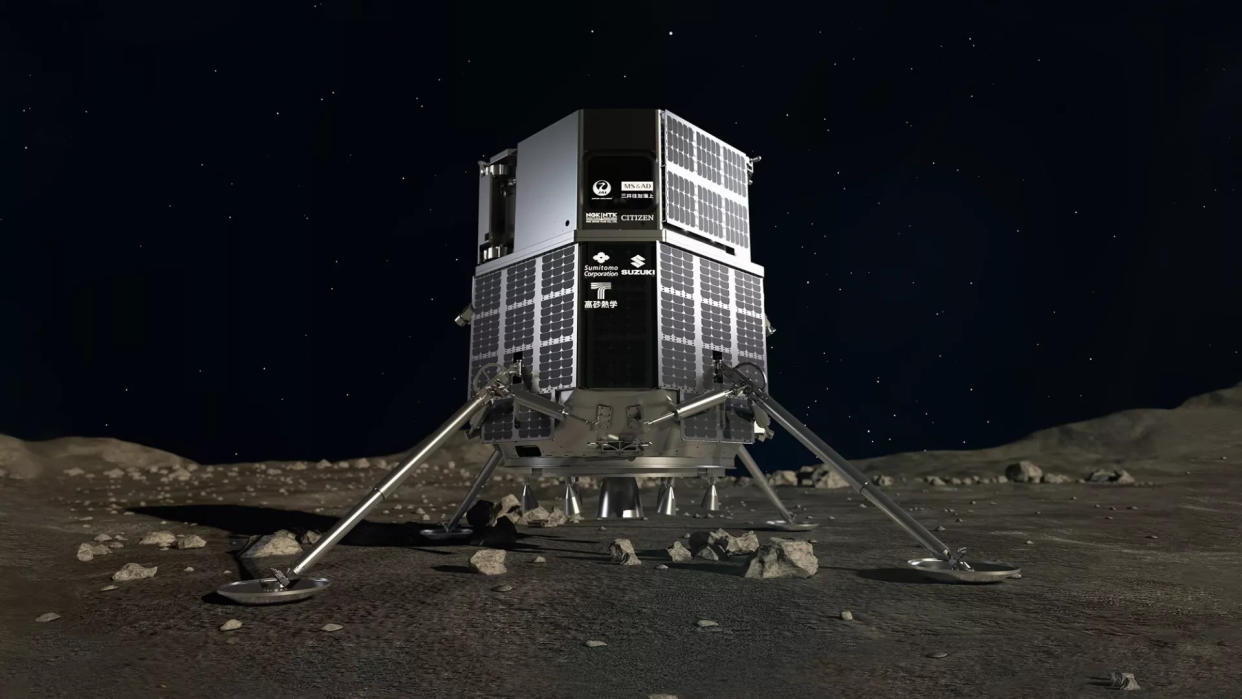Private Japanese moon lander crashed after being confused by a crater

The private Japanese moon lander Hakuto-R crashed in late April during its milestone landing attempt because its onboard altitude sensor got confused by the rim of a lunar crater.
Representatives of Tokyo-based company ispace, which built the spacecraft, revealed that the unexpected terrain feature led the lander's onboard computer to decide that its altitude measurement was wrong and rely instead on a calculation based on its expected altitude at that point in the mission. As a result, the computer was convinced the probe was lower than it actually was, which led to the crash on April 25.
"While the lander estimated its own altitude to be zero, or on the lunar surface, it was later determined to be at an altitude of approximately 5 kms [3.1 miles] above the lunar surface," ispace said in a statement released on Friday (May 26). "After reaching the scheduled landing time, the lander continued to descend at a low speed until the propulsion system ran out of fuel. At that time, the controlled descent of the lander ceased, and it is believed to have free-fallen to the moon's surface."
Related: Moon crash site found! NASA orbiter spots grave of private Japanese lander (photos)
The company said in a briefing that an insufficient consideration of terrain topography around the landing side contributed to the failure, partly due to a landing site change several months prior to the mission's liftoff.
The lander, which launched in December 2022 on a SpaceX Falcon 9 rocket, was to land on April 26 on the floor of the 54-mile-wide (87 km) Atlas Crater in the Mare Frigoris ("Sea of Cold") region of the moon's near side. Earlier this week, NASA's Lunar Reconnaissance Orbiter spotted the Hakuto-R wreckage near the intended landing site.
Related stories:
— Private Japanese moon lander sends home stunning image from lunar orbit
— Private Japanese lander sets distance record on its way to the moon
— Private Japanese moon lander snaps 1st photos in deep space
If successful, Hakuto-R would have been the first privately operated moon lander to accomplish a lunar landing. So far, only NASA, China and Russia have soft-landed spacecraft on the moon's surface.
Ispace stressed that the mission successfully completed eight of its nine mission milestones and only failed in the final stages of its powered descent. The mishap, the company's representatives said, will not affect the planned launches of ispace's second and third missions in 2024 and 2025, respectively.
Because the failure was traced down to a software issue, the future missions will not require a hardware redesign.
"Now, we have been able to identify the issue during the landing and have a very clear picture of how to improve our future missions," Takeshi Hakamada, Founder and CEO of ispace, said in the statement.

